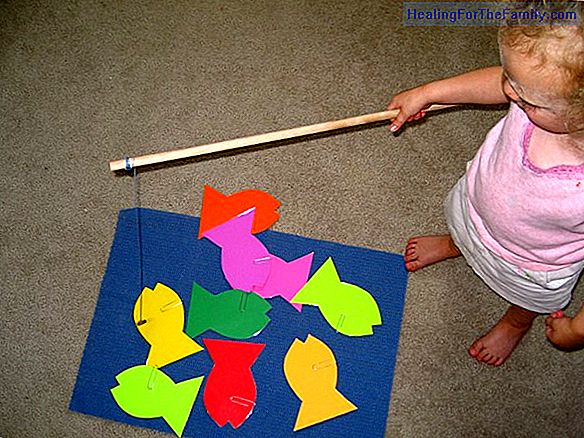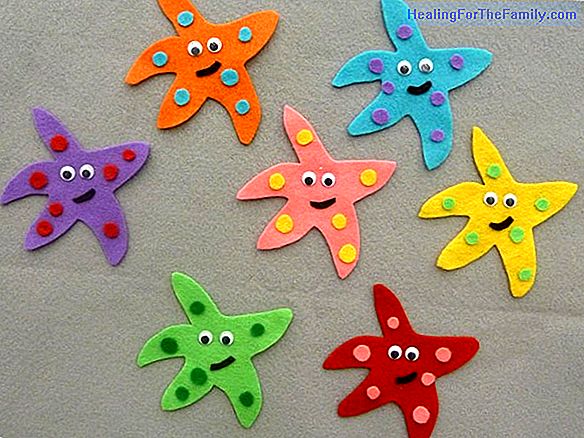Punishments depending on the age of the child
Punishments should always be the last resort and not the first thing we apply to disobedient, challenging or misplaced behavior. If what we really want is for our children to learn to respect the rules and limits established at home or abroad in an effective way, to understand what is right and what
Punishments should always be the last resort and not the first thing we apply to disobedient, challenging or misplaced behavior. If what we really want is for our children to learn to respect the rules and limits established at home or abroad in an effective way, to understand what is right and what is not, rather than to punish, it must be an example to continue apart from trying to reinforce, whenever possible, their appropriate behaviors. However, there are times when it is necessary to teach our children the negative consequences of their actions
by applying sanctions to their inappropriate behavior. And although I personally bet more for the educational consequences, punctual punishments also have their place in our educational work. Types of punishment depending on the age of the child The first thing that we must bear in mind when applying a punishment is that
to be educational, it must be balanced, exceptional, coherent and applicable.

If there is something that reduces credibility to the parents, it is a punishment that does not apply or that rises shortly after assigning it because it is excessive or too severe. 1. After 2 years: Verbal reprimands.
Verbal reprimands are a type of punishment that can be used very occasionally, for example in situations that entail some kind of danger for our children or for others. It is a way of sanctioning inappropriate behavior using a strong and firm tone of voice, without exits of tone or confrontations with our children. Young children are very sensitive to this technique if it is used moderately and we are not all day screaming at them for anything. A verbal reprimand for crossing the street without looking or trying to touch a pan that is on fire is enough punishment for a small child who must learn that these situations are dangerous. 2. After 3 years:
Overcorrection.
This is a very effective type of punishment, which uses punitive consequences based on effort. That is, when we use overcorrection, we use natural consequences to break with bad habits and to teach appropriate behaviors at the same time. For example, if our 3 or 4 year old son repeatedly throws the food on the floor, we will ask him to pick up everything he has thrown away and help us clean the kitchen. It can be very useful to end those undesirable and repetitive behaviors, against which we have tried a lot of things and none of them worked for us. The repair is a form of overcorrection that consists precisely in restoring the damage caused physical or emotional. For example, a child who deliberately paints the walls of the house or who has broken an object by throwing it on the ground is required to clean the walls he has soiled or to replace the object he has broken with his money.
3. From 2 to 10 years old:
Time out.
The time for reinforcement is applied removing the small child from the place where he has had a bad behavior such as fighting with his brother, kicking a playmate, throwing sand in the face of others, insulting, disobeying ... an effective technique for disruptive, aggressive and disobedient behaviors. It is about moving the child away from the situation where he has committed a bad action by giving him the opportunity to calm down outside the place where everything happened. Useful in young children up to 10 years old. The length of time outside will vary depending on the age of the child, so we will try to apply no more than one minute per year. The child should not be permanently out at a time.
4. From 3-4 years to adolescence: Sanctions, withdrawal of privileges, reinforcers or stimuli.
It is the typical punishment of 'you stay without dessert', 'today without drawings', 'you do not go to the park'. But it also falls into this category of punishment the removal of toys, consoles, tablets, phones and computers in the case of older children and adolescents.
It is not the most effective type of punishment because we use it too often and with little consistency. Remember that for a punishment to be effective it must be applied immediately to the behavior we wish to eliminate, which must be fair and appropriate to the age of our children. Leaving a 3-year-old boy without a park for having fought with his brother would be unfair and not coherent, while keeping him away from the place where the fight took place without playing momentarily will be more effective.












